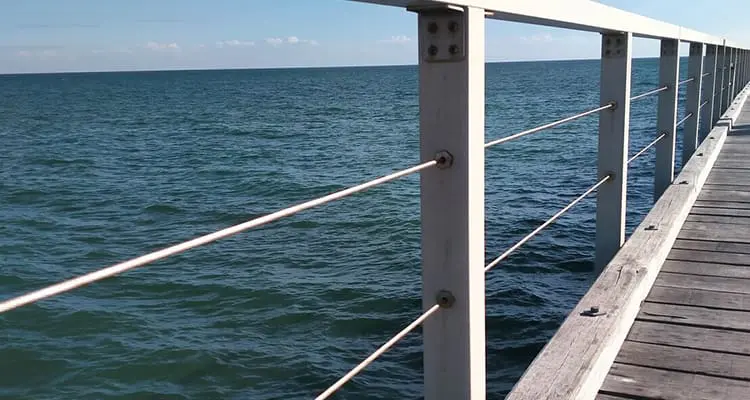We discuss the significance of UV resistant FRP public infrastructure and its impact on longevity and safety.
Understanding the Role of FRP in Public Infrastructure
Fiber Reinforced Plastic (FRP) has become an essential material in the construction of public infrastructure. FRP offers various advantages over traditional construction materials, including high strength-to-weight ratio, corrosion resistance, and design flexibility. FRP is commonly used in the construction of bridges, walkways, and other recreational public infrastructure. FRP can also be constructed with UV inhibitor properties integrated into the product, ensuring resistance to UV degradation.
The Dangers of UV Exposure on FRP Structures
UV exposure can have detrimental effects on FRP structures. When exposed to sunlight, some types of FRP can degrade and weaken over time. This degradation process, known as photodegradation, can lead to reduced structural integrity. Additionally, UV exposure can cause discoloration, fading, and surface cracking in FRP, affecting its aesthetic appeal.
It is crucial to protect FRP structures from UV exposure to prevent premature deterioration and ensure their long-term performance.
This is a prime example of an outdoor structure constructed using FRP, and a coat of paint to protect the structure from exposure. Resources will need to be expanded for regular maintenance of the surface coating. The lack of surface protection exposes the material to eventual disintegration.

Brand X FRP products. Seacliff Beach, South Australia. Installed in 2018, photo taken in April 2023.
Implementing UV resistant FRP in public infrastructure offers numerous benefits. Firstly, UV resistant FRP withstands prolonged exposure to sunlight without significant degradation, ensuring the structural integrity and longevity of the infrastructure. This reduces the need for frequent repairs and maintenance, resulting in cost savings over the lifespan of the structure.
Furthermore, UV resistant FRP maintains its aesthetic appeal and visual quality over time, enhancing the overall appearance of the public infrastructure. This is particularly important for structures that are highly visible, such as pedestrian bridges or park amenities.
UV resistant FRP contributes to the sustainability of public infrastructure by minimising the environmental impact. By reducing the need for replacement or repair, UV resistant FRP helps conserve resources and reduces waste. UV resistant FRP structures installed in marine environments also resist degradation into microplastic particles.
Enhancing Longevity and Durability with UV Resistant FRP
UV resistance plays a crucial role in enhancing the longevity and durability of FRP in public infrastructure. By protecting the FRP composite from UV radiation, the structural integrity of FRP is preserved, ensuring its performance and safety over time.
To achieve UV resistance, various strategies can be employed. One common approach is to incorporate UV stabilizers or additives during the manufacturing process. These additives help protect the product from UV radiation.
Additionally, surface coatings or treatments can be applied to FRP structures to provide an extra layer of protection against UV exposure. These coatings act as a barrier, shielding the FRP from direct sunlight and minimizing the effects of UV radiation.
By investing in UV resistant FRP, public infrastructure can be designed to withstand the challenges posed by outdoor environments and ensure its long-term functionality.
This is a Treadwell FRP structure, also installed at a beach in Adelaide in 2018, photo taken also taken on the same day in April 2023.

NatureTREAD™ FRP Balustrades. Henley Beach, South Australia. Installed in 2018, photo taken in April 2023.
Ensuring Safety and Reliability in FRP Public Infrastructure
Safety and reliability are paramount in public infrastructure projects. UV resistant FRP plays a crucial role in ensuring the safety and reliability of FRP structures.
UV exposure can weaken FRP and compromise its load-bearing capacity, posing a risk to the structural integrity of the infrastructure. By implementing UV resistant FRP, the risk of structural failure due to UV degradation is significantly reduced. This provides peace of mind for both the public and the engineers responsible for designing and maintaining the infrastructure.
Regular inspections and maintenance are essential in identifying any signs of UV degradation in FRP structures. By proactively addressing any issues and ensuring proper UV protection measures are in place, the safety and reliability of FRP public infrastructure can be maintained throughout its design life.
 AU
AU
 NZ
NZ
 UK
UK